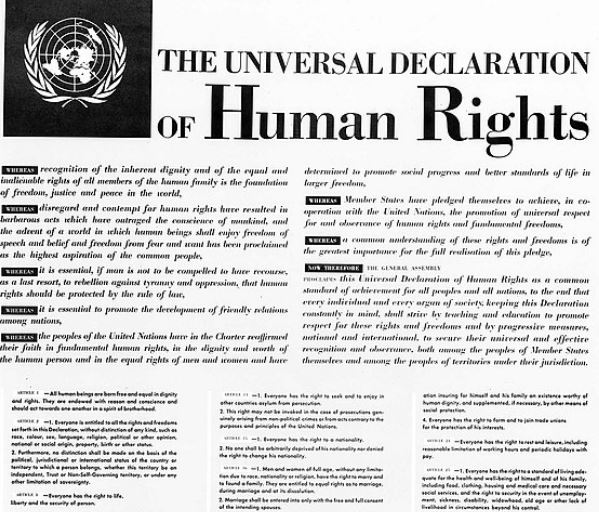The horrors of the Second World War which finished in 1945 prompted governments around the world to join together to prevent anything on this scale happening again and they formed The United Nations. The United Nations is a global organisation of countries around the world whose purpose is to maintain international peace and security and develop friendly relations with all countries. The headquarters are in NYC. The UN Charter was signed on 26th June 1945 and became active on the 24th October 1945.
The Universal Declaration of Human Rights (UDHR) is an international document which was created by the United Nations which preserves the rights of all human beings. It was drafted by a committee which was chaired by Eleanor Roosevelt, the First Lady of the United States of America at the time, and it was accepted on 10th December 1948 in Paris. The declaration contains 30 articles which cover an individual person’s basic rights and freedoms to ensure they can live safely, happily, and free from prejudice, hatred, and violence.
The UDHR asks all nations to recognise all human beings as equal and all deserving of these rights and freedoms, regardless of their age, sex, gender, ethnicity, religion, language or any other status.
Although the UDHR is not legally binding, it has formed the basis of what we now refer to as international human rights law, and many countries have adopted the UDHR into their own legal framework to form bills and laws to protect citizens. The declaration remains a living document and is the most translated document in the world.
The rights set out in UDHR include the right 2 freedom of expression, the right to education, the right to a private life, to be free from torture, to seek asylum and the right to enjoy culture.
